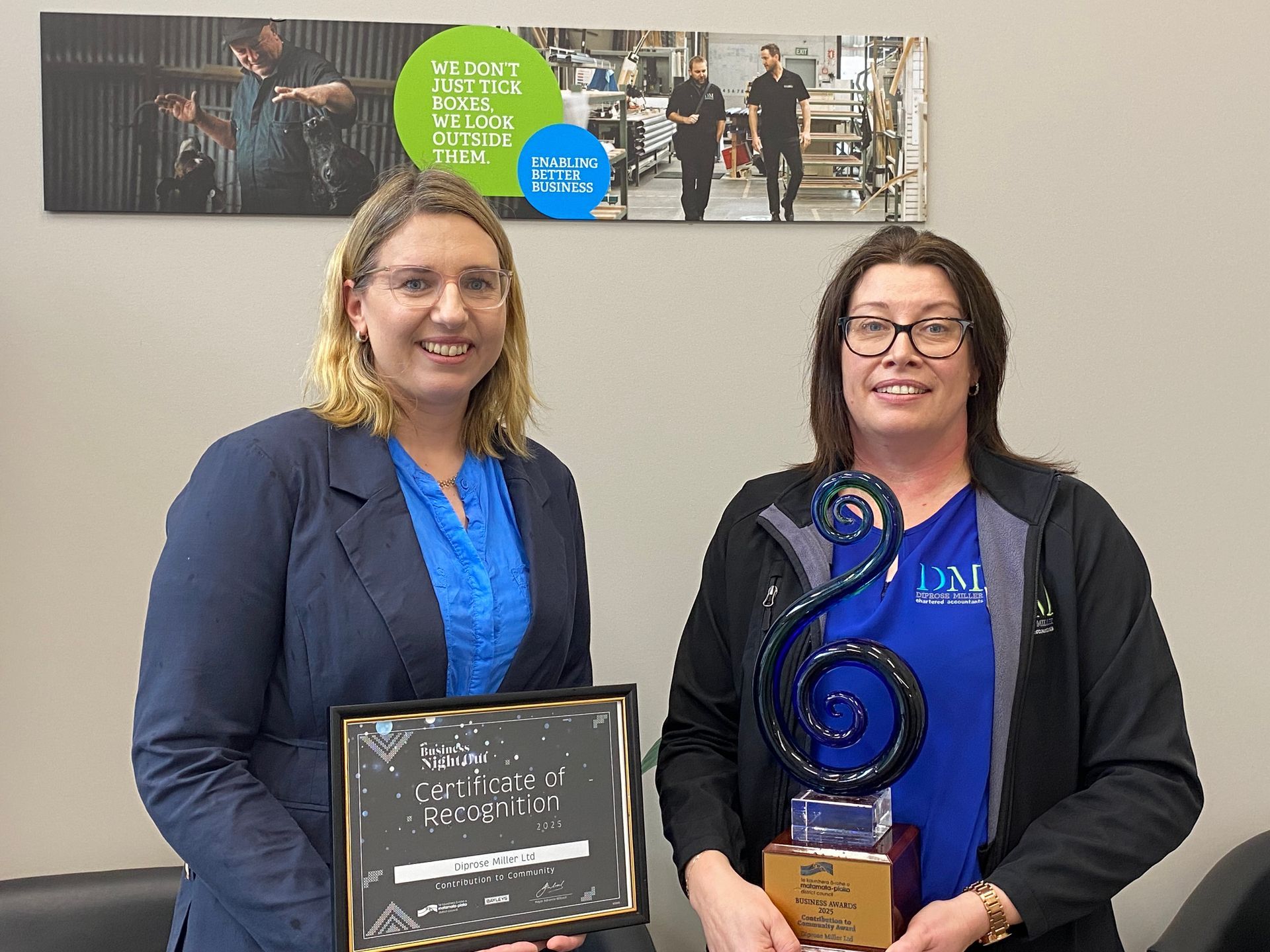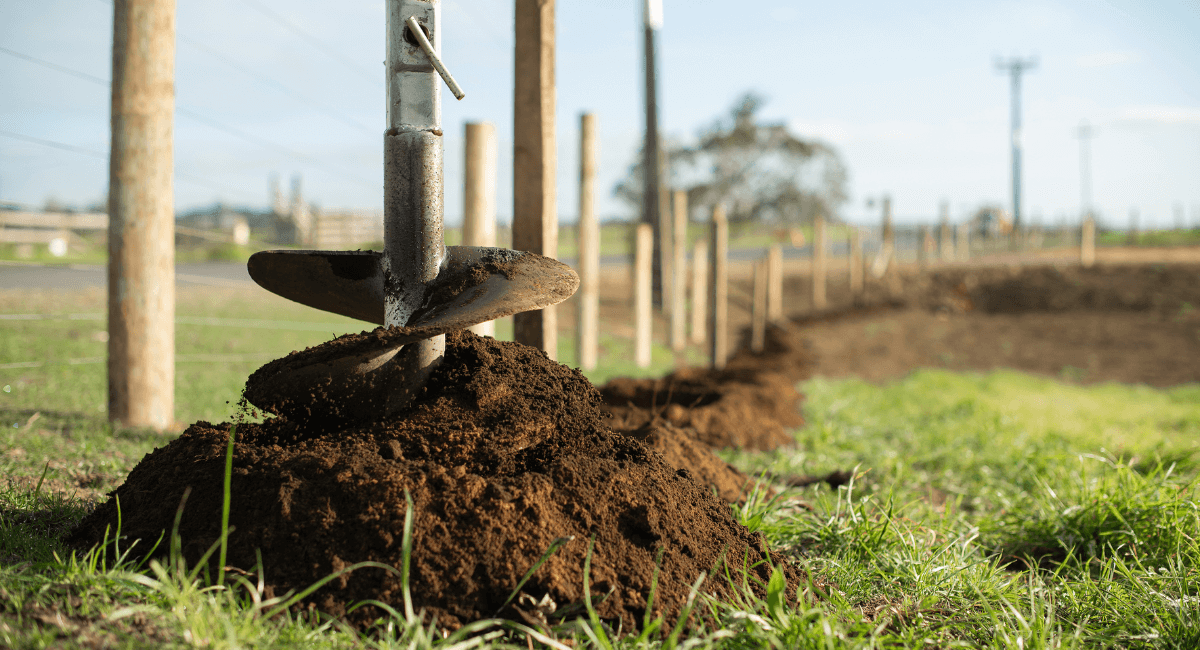News
We share useful content to help you in your role as business owner or operator.

10 October 2025
Building a property portfolio is about more than just acquiring properties - it’s about managing the financial details that keep growth sustainable. From tracking cash flow to structuring ownership, the right accounting approach helps investors scale with confidence. Here are practical tips to strengthen your portfolio while maintaining financial stability. 1. Accurate Record Keeping Maintaining accurate and detailed financial records is crucial for managing a growing property portfolio. This includes: Income Tracking: Document rental income for each property separately. Expense Records: Keep a record of all expenses, including maintenance, repair costs, property management fees, rates and insurance. Mortgage Documentation: Track loan balances, interest rates, and payment schedules. Using accounting software tailored for property management can streamline this process and help you generate useful financial reports. 2. Understand Tax Implications As your portfolio grows, so will the complexity of your tax responsibilities. Ensure you are familiar with: Deductible Expenses: Understand which expenses are tax-deductible to maximize your tax benefits. Common examples include mortgage interest, property taxes, and operational costs. Bright-Line Rules: Be aware of potential bright-line tax liabilities when selling property and explore tax strategies to mitigate these costs. Consulting with a tax professional or accountant who specializes in real estate can provide valuable guidance. 3. Use Strategic Financing Leverage strategic financing options to expand your property portfolio effectively: Refinancing: Consider refinancing your existing properties to take advantage of lower interest rates or to extract equity for new investments. Portfolio Loans: Utilize portfolio loans that enable you to finance several properties under one consolidated loan, simplifying management and potentially offering better terms. Proper financial analysis will ensure that any borrowed capital is sustainable and beneficial in the long term. 4. Perform Regular Financial Analysis Regularly assess the financial performance of your property investments to make informed decisions: Cash Flow Analysis: Continually monitor cash flow to ensure your properties are generating surplus cash that can fund new purchases or improvements. Profitability Metrics: Calculate metrics such as ROI (Return on Investment) and cap rates (Capitalization Rate) to evaluate the performance of individual properties. Leveraging these analyses will help you identify underperforming assets and make strategic decisions on acquisitions or disposals. 5. Plan for Contingencies Have a financial contingency plan in place to shield your portfolio from unexpected events, such as market downturns or natural disasters. This might include: Emergency Funds: Maintain a reserve of liquid assets to cover unexpected expenses or periods of reduced income. Insurance Coverage: Ensure adequate insurance coverage for each property to mitigate risks from damage or liability. 6. Engage Professional Services As your property portfolio expands, the complexities of managing it can increase significantly. Consider engaging professionals such as: Accountants: They can manage the intricacies of financial records, compliance, and tax planning. Property Managers: They can handle daily operations, tenant management, and maintenance, allowing you to focus on strategic growth. Growing a property portfolio requires careful financial planning and management. By keeping accurate records, understanding tax implications, strategically using financing, regularly analysing financial performance, and planning for contingencies, you can efficiently expand your real estate investments. Engaging professional services, including accounting support, will provide peace of mind and contribute to the long-term success of your portfolio. If you need expert accounting services tailored to property investment portfolios, feel free to reach out to us . Our team understands the nuances of real estate accounting and can provide personalized advice and solutions to support your investment objectives.

8 October 2025
Property development can deliver strong rewards, but navigating tax obligations is rarely straightforward. Overlooking key rules can erode profits or create unexpected liabilities. To help you stay compliant and protect your bottom line, here are five common tax traps developers encounter - and how to avoid them 1. Ignoring Goods and Services Tax (GST) Obligations Many property developers overlook their GST obligations, which can result in substantial penalties. Solution : Ensure you are registered for GST if your turnover exceeds the registration threshold. Keep detailed records of all sales and purchases to help accurately calculate your GST liabilities. 2. Incorrectly Claiming Deductions Expenses related to property development can often be incorrectly claimed as immediate deductions, leading to issues during tax assessments. Solution : Distinguish between capital and revenue expenses. Only claim deductions you're entitled to and ensure expenses like interest and holding costs, typically capitalized until the property is completed and sold, are not incorrectly expensed. 3. Overlooking Potential Bright-Line Implications Misunderstanding when and how the bright-line rule applies can lead to unexpected tax bills. Solution : Plan each development project with a clear understanding of the tax implications. Consult with your accountant to determine whether a property is being held as trading stock (where profits count as ordinary income) or as an investment (potentially subjecting it to the bright-line rule). 4. Mismanaging Property Titles and Ownership Structures The structure in which you hold property plays a crucial role in determining tax liabilities. Solution : Review your ownership structures - such as individuals, companies, or trusts-as each has different taxation implications. Strategic planning with a tax advisor can help optimize your tax outcomes and ensure compliance from the outset. 5. Failing to Comply with PAYE and Withholding Tax Requirements If you engage workers or sub-contractors, failing to meet PAYE and/or withholding tax obligations can lead to penalties. Solution : Implement a robust payroll system to ensure PAYE and withholding tax is managed correctly. Regularly review and update subcontractor agreements and ensure compliance with Inland Revenue requirements to avoid potential penalties. Final Thoughts Navigating the tax landscape in property development can be intricate and demanding, but with thorough planning and professional advice, these common tax traps can be avoided. Partnering with a knowledgeable accounting firm can provide you with the support and guidance necessary to manage your tax obligations effectively, ensuring the success and profitability of your property development projects. Our team is ready to help guide you through the tax complexities of development

1 October 2025
Diprose Miller is proud to have received the Contribution to Community Award at the 2025 Matamata-Piako District Council’s Business Night Out. This award recognises the positive impact our directors and staff are making within our local community - and in particular, the difference that our Diprose Miller Community Fund is making to a wide range of local groups. Why this award matters a lot to us Community has always been at the heart of Diprose Miller. For us, success isn’t just measured in numbers; it’s measured in the wellbeing of the people and groups around us. Being recognised for our contribution affirms the values we live by: supporting local organisations, helping people feel they belong, and celebrating the region we live in. About the Diprose Miller Community Fund The Diprose Miller Community Fund was established to provide practical support to not-for-profit organisations and individuals who are working hard to make our communities better places to live. The fund contributes towards specific project costs that might otherwise not be affordable - easing financial pressure so groups can focus on what matters most. The impact so far Since its launch, the fund has supported a wide range of initiatives, from local sports clubs to schools, theatre, art and music groups, programmes supporting vulnerable people and community projects within the farming sector. Whether it’s new uniforms for a sports team, resources for a service to the community, or helping a local group host an event, each contribution adds up to stronger connections and greater opportunities across our district. Looking ahead We’re honoured to be recognised with this award - but more importantly, we’re excited to continue investing in the wellbeing of our community. As our district grows and changes, we remain committed to supporting those who make a difference every day. Congratulations also to the many other winners and finalists celebrated on the night - together, we’re building a vibrant, connected, and resilient community.

11 September 2025
Fonterra’s recent announcement - $16 billion in cash returns and a 15% revenue boost - is great news for farmers. With strong returns flowing in, many are asking: what’s the smartest way to reinvest? Paying down debt has long been the default. But with stronger equity positions and healthier balance sheets, now’s the time to think bigger. Here are three areas where reinvestment can drive long-term growth and resilience. 1. Rethink land use If a change in land use could lift your profitability, it’s worth exploring. Whether it’s diversifying into horticulture, or leasing out underused land, banks are increasingly backing strategic shifts that build equity. The right move could reshape your farm’s future. 2. Invest in business essentials Reinvesting in business essentials helps protect your equity and maintain leverage with lenders and suppliers. This might mean upgrading infrastructure, ticking off your farm environment plan, or tackling deferred maintenance. These aren’t just compliance tasks, they’re the foundation of your long-term viability. 3. Streamline for efficiency Technology and infrastructure upgrades can reduce labour hours, cut power costs, and future-proof your operation. Think solar panels, cow collars, automatic drafting systems, or finally replacing that tractor that’s costing more than it’s worth. With investment incentives currently available, now’s a great time to act. The takeaway Strong returns give you options. Reinvesting in land use, business essentials, and efficiency can strengthen your balance sheet, boost productivity, and set your farm up for long-term success. At Diprose Miller, we help farmers make smart, strategic decisions that support growth and protect family prosperity. If you’re ready to put your returns to work, let’s talk.

4 September 2025
Sometimes you may pay your employees sums in addition to their normal wages, such as: allowances benefits holiday pay lump sum payments Some are tax free, but most are taxable. For some, the employer pays the associated tax. For others, the employer deducts PAYE on the employee's behalf. You may also provide various non-cash benefits to your employees as part of their total employment package. Even where the benefits are not in cash, they still have a value which is taxable. The tax treatment depends on what the payments are for and the circumstances that apply. A brief overview Allowances There are different kinds of allowances but if it's a straightforward reimbursement to the employee for out-of-pocket work-related expenses, the allowance isn't taxable. Mileage, meals, and tools (including telecommunication devices) are examples. If the amount of the allowance is more than the actual amount of the expense, then the difference is taxable. The employee will be subject to PAYE or you will pay FBT on the difference. What about travel? Where you pay a travel allowance to an employee, you need to determine whether you are liable for FBT (if you paid for the travel) or the employee is liable for PAYE (if you reimbursed the employee’s travel costs). For a travel allowance to be tax-free, the travel must be ‘on work’ rather than just ‘getting to work’. Different factors affect the tax treatment. Can I claim GST on benefits and allowances paid to employees? You may be able to claim GST on allowances paid to employees for work-related expenses, if you are registered for GST. Keep all relevant tax invoices. You can’t claim GST for items that aren’t employment related, so this generally rules out claims on benefits. Benefits Benefits include anything that benefits the employee. They're not wages as such, but they're part of the employee's total employment package. As they're a perk of the job for the employee, you, as the employer, will usually pay fringe benefit tax (FBT) or be subject to PAYE on the value of the benefit. Benefits fall into several categories: non-cash, cash, and so-called special benefits. Holiday pay The employee is liable for PAYE on pay for annual leave and statutory holidays. Lump sum payments Pretty much anything else is classified as lump sum payments. These include bonuses, cashed-in annual leave, payments for accepting restrictive covenants, exit inducement payments, gratuities, or back pay, redundancy payments, retiring allowances, and overtime. Employees are usually liable for PAYE on these payments. Note that: the PAYE rate will vary depending on the employee's total taxable income ACC earners' levy won't apply above the maximum liable income threshold redundancy payments and retiring allowances are not subject to ACC earners' levy It can be confusing working out the tax treatment of these payments for your business. Let us know if you would like to discuss how the rules apply to your business.

21 August 2025
Keeping on top of the financial management of your business can be hard work. It's possible to have a profitable business that is struggling to find the cash flow to pay expenses and fund growth. Likewise, you could have positive cash flow but are not turning a profit, particularly if you are re-investing profits back into the capital expenditure. Turning a profit is at the heart of running any successful business But without an even and predictable flow of cash into the company, you can't cover your overheads, you can't pay your employees, and you can't run your day-to-day operations – let alone think about expanding and growing the business. In the end, you need both. But if you’re going to be in control of your financial destiny, it’s important to get your head around the important process of cash flow management. Let’s look at some of the key things to understand about your finances: Profit is a by-product of a successful business – as the owner, you want to make profits, but profitability isn’t the only goal. A business can easily be profitable, but also be highly unstable in the longer term. What you want is stability and consistent revenues. Cash flow keeps your business alive – good revenues (income) serve to bring cash into the business. Without cash to cover your operating expenses, you have no means to keep the lights on in the business. So cash really is king! Know your cost base and overheads – the flip side of your cash flow position is your costs. In an ideal world, you want more cash inflows than cash outflows, so it’s important to know your expenses and costs and to manage them carefully. Be proactive about spend management and easing expenditure – if you can take action that reduces your spending, that is hugely positive for your cash flow position. Choose cheaper suppliers, negotiate better deals and bring that cost base down. Drive more revenue, through increased sales and marketing activity – if you can increase your revenues, you also boost your cash flow. So it’s important to be proactive about running targeted sales and marketing campaigns to increase your sales. Keep the cash flowing and the profits take care of themselves – if you achieve the ideal cash flow position, the company sits on solid financial foundations, the cash is there for investment and the business can grow. It’s that simple. Talk to us about improving your cash flow management Whether you’re new to running a business, or a seasoned owner who needs some financial support, we can give you the cash flow advice you need. We’ll review your finances, delve down into your cash flow, and come up with key ways for you to increase your cash income and reduce your cash expenses. It only takes a few small changes to achieve a far better cash flow position for your business – helping you maintain positive cash flow AND generate profits.

14 August 2025
Unemployment in New Zealand has been steadily rising over the past two years. The unemployment rate has risen from 3.4% in Q1 of 2023, to 5.1% in Q4 of 2024. The rate has remained static for Q1 of 2025, but this prolonged rate of unemployment may be having a detrimental impact on the future of your small business. Let’s look at the alignment between unemployment and your future growth. 1. Reduced consumer spending: With more people out of work, consumers have less disposable income to play with. This leads to customers tightening their belts and less consumer spending on non-essential goods and services. This can directly impact your sales and monthly revenue, forcing you into a corner where prices (and margins) might be decreased to encourage more sales. 2. Low morale and poor employee retention: While a larger talent pool might seem beneficial, high unemployment can sometimes create a sense of job insecurity among your existing employees. Unstable economic conditions can lead to decreased morale, higher stress levels, and a potential struggle to retain top talent, who may feel less secure in their current roles. 3. Difficulty securing loans and funding: Banks become more risk-averse when there’s evidence of high unemployment, poor economic conditions and unpredictable market conditions. The recent CPA Australia Asia-Pacific Small Business Survey found that only 26.4% of Kiwi businesses expect it to be easy to access finance. Reduced access to funding can lead to poor cash flow, slower growth and an increasing need to reduce costs. 4. Decline in overall business confidence: The combined impact of poor economic conditions and high unemployment is significant. This unpredictable and unstable outlook can have a major effect on business confidence. New Zealand's ANZ Business Outlook Index fell sharply to 36.6 in May 2025 from 49.3 in the previous month. This may deter your small business from investing, innovating or expanding – all factors that could hinder your own long-term growth and stability. If you need support getting your business through the tough times – we’re here to help. There are still ways to control your spending, drive growth and do your bit to provide employment.

7 August 2025
For centuries, accounting was all about reviewing historic information – but that only told you about the past, not what was going to happen in the future. If you’re only looking back at past periods and historic numbers, this limits the insights you can achieve for your business. With a backward-looking ideology, it becomes difficult to plan, run through different scenarios or understand the path of the business going forwards. Forecasting changes this. With the right data analysis and forecasting tools, you can project sales, cash, revenue and profits into the future – and get in control of your business. A forward-looking view of your business journey Forecasting switches the focus of your financial management. By moving to a forward-looking view of your business journey, you can see further down the road – and that helps to spot any opportunities and avoid common business pitfalls. Forecasting adds value by: Highlighting the data patterns – a forecasting tool takes your historic data and projects it forward in time. This helps you and your advisers spot patterns, trends, gaps and opportunities, revealing the true ‘story’ behind your business accounts. For example, forecasting may reveal a predicted seasonal slump in the next quarter, allowing you to plan ahead and proactively take action to minimise negative impacts. Giving you a future view of your business – instinctively, business owners will look back at prior periods to assess performance. There’s value to reviewing your historic actuals, of course, but using forecasting helps you to look forward, rather than just backwards. Forecasting is the satnav, showing you the road ahead, rather than the rear-view mirror showing you the road you’ve already travelled. Helping you scenario-plan – with a financial model of your key drivers, combined with accurate forecasting, you can quick answer your burning ‘What if…?’ questions. Forecasting lets you run different scenarios, with different drivers, to see how business decisions may pan out over time. If option B performs better than option A, that’s invaluable information when defining your next strategic move. Making informed, evidence-based decisions – having ‘the full picture’ of combined historic numbers, forecasts and longer-term projections aides your business decision-making. Forecasting gives you solid evidence on which to base your strategy and helps to red flag any threats that are looming on the horizon – giving you the best possible information to keep your executive team informed and on the ball. A more effective relationship with your accountant – forecasting also helps us to get a better insight into what makes your business tick. This helps to spot potential areas of performance improvement, and to give you the best possible strategic advice, all backed up by solid, empirical data and management information. If you want to get in better control of the destiny and results of your company, we’re here to talk. Forecasting helps you highlight your future threats and opportunities – and create a proactive strategy to improve the performance of your business. It’s not always an easy process, but almost always one worth undertaking.

31 July 2025
Understanding your finances is a vital part of running your business. But getting down into the nitty gritty of your business’ financial reports isn’t every entrepreneur’s top skill. If you are new to company accounting, or simply want to expand your knowledge, this guide explains the foundational reports. The profit and loss report and the balance sheet are both key reports when it comes to getting in control of your company’s financial health. What’s a profit and loss statement? Your profit and loss statement is commonly called your P&L, but is also referred to as your income statement or statement of earnings. It’s a full breakdown of your company’s revenue (money coming into the company as sales and other business income) and your expenditure (direct costs, overheads, expenses and other costs). As a business, you obviously want to turn a profit and make money from your venture. Careful observation of your P&L allows you to track your revenues and expenses over a set period of time. You can then look back over the period and see exactly where you’re making money, and where you’re losing money. The more you make, and the less you lose, the greater your profits will be at year-end – and your P&L is your barometer for measuring these metrics. The P&L statement is good for: Giving you a breakdown of all revenues and relevant costs and expenses Showing the profit and loss figures over a set period of time Summing up your profit and loss for the period to gauge if you’re profitable. What’s the balance sheet? The balance sheet gives you a snapshot of your company’s financial health at a given point in time, based on the following accounting equation: ‘Equity = Assets - Liabilities’ The balance sheet shows you the company’s: Assets (the things the company owns, including cash) Liabilities (the things the company owes other people) Equity (retained earnings plus the funds you originally invested as shareholders) Unlike the P&L – which shows you the revenues and expenditure over the course of a given historic period – the balance sheet is best seen as a ‘screenshot’ of your current finances. In a nutshell, it shows you what the company is worth on paper right now, based on the current numbers in your business accounts. So it’s a vital tool in your accounting toolbox. The balance sheet is helpful for: Assessing the current financial position of the company Providing evidence of your financial position to banks, lenders and investors Making decisions on company dividends and related distributions Giving potential buyers an idea of the company’s tangible net asset value, if you plan to sell up. Talk to us about expanding your accounting skills If you can’t quite tell your assets from your equity, we are here to help. Accounting can be complicated and it takes time to fully grasp all the different terms and processes. We’ll be happy to run you through your latest management or statutory accounts and explain exactly what each report means – and how it reflects your current performance as a business. Get in touch with us to find out more.

15 July 2025
If you operate your business as a company, and you make a vehicle available to an employee to use privately, you’ll be liable to pay fringe benefit tax (FBT). This applies on vehicles made available to: employees (and their associated persons), and shareholder-employees (business owners) This applies whether the vehicle is actually used for private purposes or not. FBT does not apply: to vehicles that come within the definition of being ‘work related vehicles’ that are not available for private use for certain emergency calls and some out of town travel for working owners in Look Through Companies (LTCs). Instead, such benefits are treated as a distribution of profit to the working owner to the extent of the private use for sole traders and partners in a partnership. Instead, they make income tax and GST adjustments for private use. Not all ‘business’ vehicles are ‘work-related vehicles’ for FBT purposes. And some companies have other options instead of paying FBT. In some cases, exemptions apply. When is FBT payable? FBT is normally payable quarterly but can be filed quarterly, annually or by income year. Filing frequency depends on the type of company you manage, the benefits you provide and how much tax you pay. It’s important for clients to get this right because the use of, and deductions claimed for, vehicles is a common feature of any Inland Revenue review of a company’s tax affairs. You need to understand how the rules apply to your specific business. If you’re unsure and need advice, we’re here to help.

3 June 2025
Last month was Mental Health Awareness week. Being a business owner can be stressful. When the buck stops with you, it can be easy to let the pressure mount up and to discount your own wellbeing. Looking after your mental health is as important as looking after your balance sheet. That’s the reality. So, having an improved focus on rest, wellbeing and talking about your struggles is a big part of moving towards becoming a better business leader. Here are some examples: Don't overwork yourself – it's tempting to work every hour that's available in an attempt to meet your goals. But working yourself into the ground is, ultimately, a destructive thing to do. If you're tired and burnt out then you're in no position to lead the company. Try to stick to set working hours and avoid working 60-hour weeks wherever possible. Sleep, rest, and downtime are vital. Schedule time for non-work-related activities – make sure you have time blocked out for things that aren't work. That might be a walk in the countryside, time with your kids, or a game of tennis. The aim is to take yourself away from the stresses of the business and to give yourself a broader life outside the company. It's a chance to have fun, to relax, or to be someone who isn't just 'the boss'. Take up an activity that promotes wellbeing – there are plenty of pastimes that can help you bring down your anxiety levels and bring you to a calmer place. Yoga is a good way to stay fit, but also an excellent form of relaxation. Equally, finding time for meditation helps you to empty your mind of business concerns and allows you to become more grounded and calmer. Even something as traditional as a fishing trip could help you to chill out and relax away from a screen. Talk about your worries, concerns, and anxieties – if business-related stress is building up, the worst thing you can do is keep it all bottled up. It's beneficial to open up and talk about these issues. This could be with a partner, a fellow entrepreneur, your accountant, or even a professional counsellor. Be transparent about your state of mind and you’ll find people are more than willing to listen, understand, and offer some support. Finally, as accountants and advisers, we’re in a good position to help when you need someone to open up to about your business concerns.

3 June 2025
About the standards. The healthy homes standards, which became law on 1 July 2019, introduced minimum standards for heating, insulation, ventilation, moisture ingress and drainage, and draught stopping in rental properties. Landlords are responsible for ensuring their properties meet the standards and continue to do so over time. When you need to meet the standards. All rental properties will need to comply with the healthy homes standards by 1 July 2025. You must make sure that your rental meets the standards within certain time frames. The time frame depends on what type of tenancy it is, or when a new tenancy starts or is renewed. What happens if you don’t meet the standards. Landlords who don't meet their obligations under the healthy homes standards are in breach of the Residential Tenancies Act 1986 – and may face consequences, like financial penalties. What to include in the tenancy agreement. New or renewed tenancy agreements must include a signed statement with details of the property’s current level of compliance with the standards. What records to keep. Landlords must keep all records and documents that show how they are complying with the healthy homes standards. These must be made available on request – for example, to the Tenancy Tribunal, or the Tenancy Compliance and Investigations team. Landlords are committing an unlawful act if they don’t supply the records within 10 working days of a request, and do not have a reasonable excuse. Tenants can also request information about compliance with the healthy homes standards. Landlords must provide this information to tenants within 21 days.

3 June 2025
Are you renting accommodation from your home, through Airbnb or some other way? For tax purposes, short-stay or holiday accommodation is treated differently from accommodation provided to tenants, boarders, or care home residents, or from student or emergency accommodation. A short stay is anything up to four consecutive weeks. The tax rules are different depending on whether you’re hosting guests in your own home, or on a separate property at your place, such as a sleepout, or at your holiday home or bach. If you host guests in your own home, whether in one or more rooms, or the whole home, income from it is taxable. You can claim deductions for costs related to the rental. If you do, Inland Revenue will want to know that you are only claiming for costs related to the rental and not for costs incurred because of your own household use.

3 June 2025
As the owner of a family farm, you’re not just running a business - you’re responsible for the future of the family’s legacy, and the financial security of your nearest and dearest. You’re also the custodian of the land, livestock, and environment that makes up your land. So, do you have a plan in place for handing over this vital asset when you choose to retire? With the average age of Kiwi farmers now at 58 years old, it’s important to think about succession planning and how the farm will be passed on to the next generation. With the demands of running and operating the farm at the forefront of your mind, it can be a challenge to find time to work on the business, and to outline your future plans as a family. But having a succession plan is a critical part of your farm strategy and planning. We’ve outlined five key areas you should have on your radar when it comes to getting a clear, workable, and effective succession plan in place. Family dynamics Sit down regularly to talk through the family’s plans for the farm, and the careers and aspirations of each family member that works in the business. This means addressing those all-important family relationships, expectations, and facing any potential conflicts head-on to ensure a smooth transition. Business valuation The farm is a critical business asset, so it’s important to get an accurate valuation of the whole business. This allows you to determine a fair and equitable transfer price to your successor, or to have a fair market price when selling up. Financial planning The business you hand on needs to be financially viable, while also providing for your own retirement. You’ll need a comprehensive financial plan to cover retirement expenses, estate taxes, and potential debt restructuring. Legal and tax implications Partnering with legal and tax advisers helps you avoid any major problems further down the line. Work with your advisers to understand the implications of different succession strategies and the impact they will have for you, your successor, your family, and the business as a whole. Retirement planning Develop a retirement plan for yourself and the current generation of family members. This means assessing your lifestyle considerations, personal retirement goals, and the financial stability you and your family will need once you step back from the farm and ownership of the business. If you need help, we’d love to talk to you about developing a succession plan for your farm and setting the best possible foundations. Succession planning should be at the top of your to-do list.









